Spring 2025 Seminar Series
This is an accordion element with a series of buttons that open and close related content panels.
April 28 - Shreya Goel, PhD | Photoacoustic Imaging to Assess Oncologic Treatment Response and Toxicity
 Photoacoustic Imaging to Assess Oncologic Treatment Response and Toxicity
Photoacoustic Imaging to Assess Oncologic Treatment Response and Toxicity
Shreya Goel, PhD
Assistant Professor of Molecular Pharmaceutics, University of Utah
Photoacoustic Imaging (PAI) combines optical imaging with ultrasound to provide noninvasive, multiparametric, high-resolution assessment of deep tissues. Compared to conventional imaging modalities that require ionizing radiation, PAI can provide distinct advantages for vulnerable patient populations. In the first part of this talk, I will discuss the utility of oxygen-enhanced (OE) PAI for treatment monitoring in mouse models of pediatric rhabdoid tumors. We show that OE-PAI can visualize spatiotemporal dynamics of hypoxia modulation by repurposed metabolic inhibitors, that can be used to optimize combination treatment with low-dose radiotherapy.
In the second part, I will describe our ongoing efforts to evaluate skin toxicities (hand-foot syndrome, HFS) that are frequently observed in patients undergoing cancer chemotherapy. We utilize contrast-enhanced-PAI to quantitatively visualize primary drug-induced skin permeability in mouse model of HFS, and its relation to secondary hyperpermeability resulting in massive drug accumulation and tissue damage.
April 21 - Christian Farrar, PhD | Molecular Imaging of Oncolytic Virotherapy with CEST Magnetic Resonance Fingerprinting and CEST Reporter Genes

Molecular Imaging of Oncolytic Virotherapy with CEST Magnetic Resonance Fingerprinting and CEST Reporter Genes
Christian Farrar, PhD
Associate Professor of Radiology, Martinos Center for Biomedical Imaging, Department of Radiology, Massachusetts General Hospital and Harvard Medical School
Cell- and viral-based therapeutics hold great promise for revolutionizing the treatment of many diseases. However, optimizing such biological therapies and assessing their efficacy depends on the ability to both monitor the spread and persistence of the therapeutic agent and evaluate the tissue molecular response. Our work has been focused on developing improved molecular imaging tools for guiding oncolytic virotherapy treatment of glioblastoma. We have recently pioneered a quantitative magnetic resonance fingerprinting (MRF) based chemical exchange saturation transfer (CEST) method to both monitor tumor apoptotic response to oncolytic virotherapy, characterized by decreased protein synthesis and intracellular pH, as well as to track the delivery and spread of the oncolytic virus using a CEST reporter gene. Quantitative CEST-MRF, with its sensitivity to pH and protein and metabolite concentrations, provides a powerful tool for non-invasive, contrast-agent free, molecular imaging.
April 14 - Randy Bartels, PhD | Computational adaptive optics nonlinear holographic microscopy for tissue imaging
Computational adaptive optics nonlinear holographic microscopy for tissue imaging
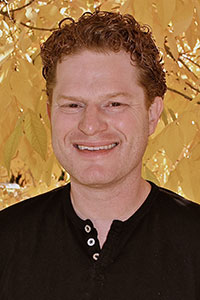 Randy Bartels, PhD
Randy Bartels, PhD
Principal Investigator at the Morgridge Institute for Research and Professor of Biomedical Engineering, UW-Madison
Optical microscopy plays a pivotal role in the understanding of spatial and temporal dynamics of biological systems and for probing material systems. Light interacts gently with biological systems, which makes imaging extremely powerful for observing living systems. As a result, optical microscopy enables everything from the discovery of basic biological processes to the ability to diagnose disease to the discovery of new materials. Optical microscopy is primarily bound by three limits: spatial resolution, molecular specificity of imaging targets, and imaging depth in tissue. My group develops new methods for extracting a greater range of information from optical microscopy.
I will discuss several aspects of computational imaging with widefield nonlinear microscopy using second harmonic generation (SHG), third harmonic generation (THG), and coherent anti-Stokes Raman scattering (CARS). These imaging methods are extremely useful for imaging studies ranging from biological samples to novel material systems. In biological samples, SHG, THG, and CARS signal generation is dominated by signals from collagen in the extracellular matrix and from muscle fibers. I will discuss computational adaptive optics for SHG and THG holographic imaging. In addition, I will discuss a new widefield computational super resolution CARS microscopy that offers a powerful new approach to vibrational spectroscopic imaging.
April 7 - Jordan Perchik, MD | I’m the Problem: How to respond when you have committed a microaggression
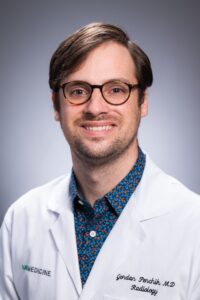
I’m the Problem: How to respond when you have committed a microaggression
Jordan Perchik, MD
Assistant Professor
Department of Radiology
University of Alabama-Birmingham
A welcoming work environment is a critical component to a successful and collaborative workforce. In an ever-diversifying healthcare field, intentional steps must be taken to recognize and effectively intervene when microaggressions occur. It is also important to recognize that microaggressions, or subtle acts of exclusion, are often unintentional, and sometimes, we may commit microaggressions, ourselves. In this presentation, we will discuss what microaggressions are, how to recognize and respond to microaggressions, and how to respond and learn from mistakes when you have committed a microaggression.
March 31 (no seminar March 24) - Jeff Squier, PhD | Structured light imaging: optical metrology for applications from advanced manufacturing to the neurosciences
Structured light imaging: optical metrology for applications from advanced manufacturing to the neurosciences
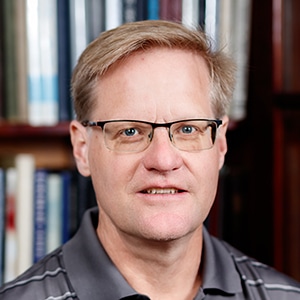 Jeff Squier, PhD
Jeff Squier, PhD
Professor, Department of Physics
Colorado School of Mines
Structured illumination imaging enables the use of extended excitation sources for use in environments where the signal light can be scattered along the collection path toward the detector. Like point excitation, structured light extended excitation source imaging is compatible with single element detection, hence its utility in imaging in specimens that result in scattered signal light. Further, the structure makes extended excitation geometries like a line excitation compatible with point geometries in terms of resolution, and in fact these extended geometries can possess broader spatial frequency support. The system is also image contrast agnostic resulting in enhanced spatial frequency support across mechanisms: linear and nonlinear excitation, coherent and incoherent signal generation. We have developed structured illumination imaging systems with exposures times ranging from 100 µs, down to the limit of a single excitation pulse: 30 fs! Results from all these systems will be presented with examples of how these systems can be used to address challenges in advanced manufacturing to the biosciences. We will also show results across contrast mechanisms and signal sources (coherent and incoherent).
March 17 - Daniel Ennis, PhD | Using MRI To Estimate Cardiac Structure and Function
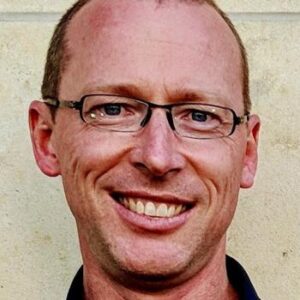
Using MRI To Estimate Cardiac Structure and Function
Daniel Ennis, PhD
Professor of Radiology and Bioengineering (by courtesy)
Stanford University
Magnetic resonance imaging (MRI) is a remarkable technology capable of probing the heart’s structure and function. The goal of these methods is to better understand cardiac performance in health and disease. Diffusion-based MRI methods have been used for decades to explore the microstructural organization of the brain and, more recently, related methods have undergone significant development to enable exploring the mesostructural organization of the heart. This talk will provide an overview of the challenges and solutions to enabling diffusion-based MRI of the heart. Estimates of cardiac mesostructure can then be combined with estimates of cardiac motion to better understand the structure-function relationships and provide insights that go beyond conventional measures of heart function.
March 10 - Paul Harari, MD & Carri Glide-Hurst, PhD | Standing Tall to Cancer: Physics and Physician Highlights of the World’s First Academic Upright Radiation Therapy Program
Standing Tall to Cancer: Physics and Physician Highlights of the World’s First Academic Upright Radiation Therapy Program
 Dr. Paul Harari, MD, FASTRO
Dr. Paul Harari, MD, FASTRO
Jack Fowler Professor
Department of Human Oncology
Principal Investigator, Wisconsin Head and Neck SPORE Grant
University of Wisconsin School of Medicine and Public Health
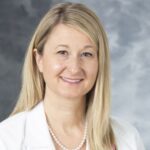 Dr. Carri Glide-Hurst, PhD, DABR, FAAPM
Dr. Carri Glide-Hurst, PhD, DABR, FAAPM
Bhudatt Paliwal Endowed Professor
Associate Chair, Radiation Oncology Physics
Departments of Human Oncology and Medical Physics
University of Wisconsin School of Medicine and Public Health
More than half of cancer patients will receive radiation therapy during their treatment. Historically, radiation therapy has been administered with patients lying down in the supine position with a large gantry rotating around them to treat their cancers from various angles. However, imaging and treating cancer patients in an upright position offers many advantages compared to supine. University of Wisconsin will be pioneering upright positioning for cancer patient treatments through a research installment in WIMR and using a fixed proton radiation beam configuration at the UW Health Eastpark Medical Campus. This talk will feature the journey to bring upright proton treatments to UW from the initial planning to the current stage. A physician and physicist pairing will share the exciting vision and first results with this state of the art system that will enable patients to stand tall against cancer in Wisconsin and beyond.
March 3 - Michael Veronesi, MD, PhD | Brain tumor theranostics: From bedside to bench and back for personalized medicine
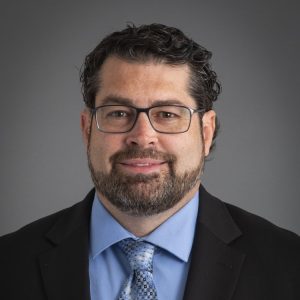
Brain tumor theranostics: From bedside to bench and back for personalized medicine
Michael Veronesi, MD, PhD
Neuroradiologist and Director of Neuro-oncological Imaging
University of Wisconsin–Madison, Department of Radiology
Radionuclide theranostics is showing great promise for personalized medicine, whereby, a patient’s candidacy is first evaluated with molecular imaging to determine the optimal therapy tailored to the individual. Receptor specific therapy response assessment in radionuclide theranostics with follow up molecular imaging allows loop closure in initial patient assessment and next steps in management. Brain tumor theranostics is one area with great potential for personalized theranostics applications. The first part of the talk will introduce clinical, near clinical or clinical research investigational brain tumor PET/MR examples of molecular imaging being performed at the University of Wisconsin. The latter part of the talk will focus in on amino acid theranostics, to include 18F-flouroethyltyrosine (18F-FET) PET imaging and its partner beta emission theranostics compound, 131I-Iodophenylalanine (131I-IPA), both as a clinical trial agent and as part of a preclinical research project at UW in a GBM rodent model. An important theme will also tie in the importance of partnering with industry for optimizing the theranostics approach.
February 24 - Kathleen M. Schmainda, PhD | Harnessing Quantitative Perfusion MRI Metrics for Brain Tumor Treatment Management
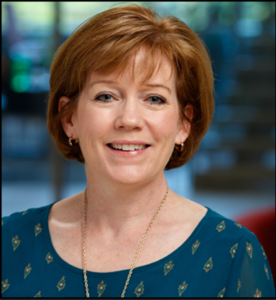 Harnessing Quantitative Perfusion MRI Metrics for Brain Tumor Treatment Management
Harnessing Quantitative Perfusion MRI Metrics for Brain Tumor Treatment Management
Kathleen M. Schmainda, PhD
Professor of Biophysics & Radiology
Medical College of Wisconsin
Treated glioblastoma and non-tumor/treated tissue can appear the same on conventional post-contrast MRI, a primary challenge for glioblastoma treatment management today. As a solution, diagnostic biopsy samples from glioblastoma patients were spatially matched to maps of quantitative, standardized relative cerebral blood volume (sRCBV) and thresholds determined to distinguish tumor from non-tumor tissue within contrast enhancement. The regions of true enhancement can be objectively identified using another quantitative method, referred to as deltaT1. The dT1 together with sRCBV are used to generate maps of fractional tumor burden (FTB) that visually display regions of tumor or non-tumor (treatment effect) within regions of contrast enhancement. These methods have demonstrated clinical utility for guiding surgical biopsy, objectively identifying the true extent of resection or ablation, and providing critical information to accurately characterize treatment response to both standard of care and new therapies.
February 17 - John Garrett, PhD, DABR | Value Added CT with Opportunistic Screening: Automated biomarkers, Applications, and Future Directions
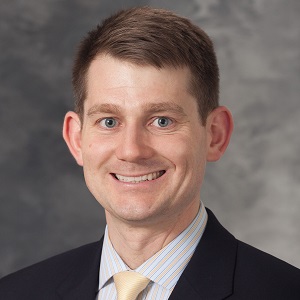 Value Added CT with Opportunistic Screening: Automated biomarkers, Applications, and Future Directions
Value Added CT with Opportunistic Screening: Automated biomarkers, Applications, and Future Directions
John Garrett, PhD, DABR
Associate Professor (CHS) of Radiology, Medical Physics, and Biostatistics and Medical Informatics; Director of Imaging Informatics
University of Wisconsin–Madison
Computed Tomography (CT) is a cornerstone of diagnostic imaging, providing critical anatomical and pathological insights. Beyond its diagnostic value, CT also offers untapped potential for opportunistic screening, leveraging existing scans to extract quantitative biomarkers that inform patient health. This presentation explores the concept of value added CT, highlighting how automated analysis tools can unlock this latent value.
We will review state-of-the-art automated biomarkers derived from CT, including body composition analysis, vascular calcifications, and bone density, discussing their implications for screening and risk stratification in chronic diseases like cardiovascular disease, osteoporosis, and cancers. We will explore the impact of CT scan protocol variability and will also discuss the concept of biological aging and how imaging markers might help shed some light on that. Additional case studies will illustrate real-world applications, focusing on technical methods, clinical integration, and the benefits of opportunistic analysis for population health.
Finally, we will discuss future directions, including emerging AI-driven techniques, extension to other modalities, and integration with electronic health records. By repurposing routine CT imaging data, we can enhance the value of radiological studies, driving innovation in preventive care and multidisciplinary collaboration.
February 10 - Jacob Scott, MD, DPhil | Beyond constraint satisfaction: how genomics can usher us into true radiation plan optimization
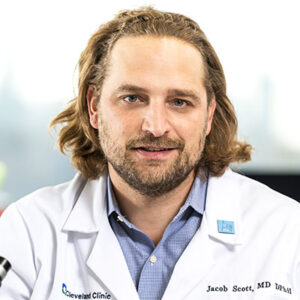
Beyond constraint satisfaction: how genomics can usher us into true radiation plan optimization
Jacob Scott, MD, DPhil
Professor of Medicine and Physics, Staff Physician-Scientist and Radiation Oncologist
The Cleveland Clinic and Case Western Reserve University
While we say we are making optimal plans for patients in radiation oncology, what we are doing is actually choosing from a number of plans which satisfy constraints. In the absence of continuous functions of outcome, this is the best we can do. However, with the advent of functions relating physics radiation dose to tumor genomics, these continuous functions do exist, opening the door for true multicriteria optimization. In this lecture I will go through the derivation of these continuous functions from tumor genomics using canonical equations of radiation biology, and review the data supporting their mapping to outcome.
February 3 - Summer Gibbs, PhD | Can Near Infrared Nerve-Specific Imaging Improve Surgical Outcomes?
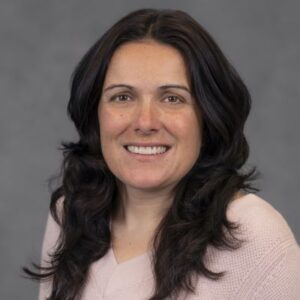
Can Near Infrared Nerve-Specific Imaging Improve Surgical Outcomes?
Summer Gibbs, PhD
Douglas Strain Endowed Professor of Biomedical Engineering
Oregon Health & Sciences University
Fluorescence guided surgery (FGS) is a nascent field, however with ~15,000 clinical FGS system distributed worldwide, its potential to specifically highlight tissues to be resected (e.g., cancer) and avoided (e.g., nerves) has been recognized and there are >125 ongoing clinical trials with novel contrast agents to leverage this clinical imaging technology. Iatrogenic nerve damage is arguably one of the most feared surgical complications as nerve injury is often permanent leaving patients with pain, loss of function and disability. Near infrared (NIR) nerve-specific contrast agent(s) that are spectrally matched to the existing clinical FGS infrastructure have a direct path to clinical translation with broad surgical applicability. However, development of NIR nerve-specific probes has been a substantial challenge as these probes must be small enough to cross the tight blood nerve barrier, but have a sufficient degree of conjugation (i.e., double bounds, which by definition increase the molecular weight) to reach NIR wavelengths. Through a directed fluorophore medicinal chemistry approach, we have designed and developed first-in-kind, small molecule NIR nerve-specific fluorophores. Our team is currently working towards clinical translation of our novel probes as we explore the utility of nerve imaging for a variety of surgical indications including prostatectomy, neurosurgery, endocrine surgeries, head and neck surgeries and orthopedic indications.
January 27 - Ivan Rosado Mendez, PhD | Expanding Horizons in Diagnostic Ultrasound: New Modalities and Their Clinical Impact
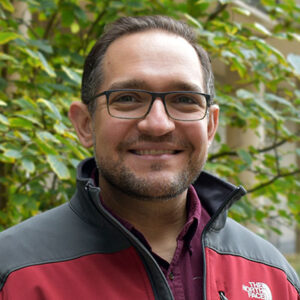
Expanding Horizons in Diagnostic Ultrasound: New Modalities and Their Clinical Impact
Ivan Rosado Mendez, PhD
Assistant Professor, Departments of Medical Physics and Radiology
University of Wisconsin–Madison
Diagnostic ultrasound is at a pivotal juncture. The increasing computational power of ultrasound scanners has enabled the development of novel imaging modalities, revealing new sources of contrast that enhance clinicians’ understanding of disease onset, progression, and response to therapy. Concurrently, the advent of handheld and wearable transducers is democratizing access to diagnostic tools, thereby promoting more equitable access to medical imaging. These advancements present new challenges for medical physicists.
This talk will provide an overview of the biological and clinical motivations behind the development of new ultrasound imaging techniques that uncover novel sources of contrast in diagnostic ultrasound. Emphasis will be placed on their physical foundations and the technical aspects of their implementation. Specific applications from the Quantitative Ultrasound Lab will be presented. The talk will conclude with a critical discussion on the challenges these new techniques face and on potential research avenues to address these challenges and facilitate clinical adoption.
Fall 2024 Seminar Series
This is an accordion element with a series of buttons that open and close related content panels.
December 9 - Jonathan Mamou, PhD | Modern Applications of Quantitative Ultrasound for Biomedical Research
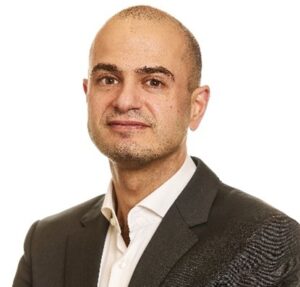
Modern Applications of Quantitative Ultrasound for Biomedical Research
Jonathan Mamou, PhD
Professor of Electrical Engineering in Radiology
Department of Radiology, Weill Cornell Medicine, New York, NY
Quantitative ultrasound (QUS) is an active research field focused on obtaining quantitative tissue properties (i.e., system- and user-independent) from ultrasound data. Conventional ultrasound imaging is commonly used to visualize soft tissue morphology. During scanning, a gray-scale B-mode image is displayed on screen from which a trained clinician can evaluate tissue states. However, B-mode ultrasound image formation discards valuable information in the raw backscattered echo signal that encodes information about tissue microstructure. Therefore, microstructural changes in soft tissues that accompany disease processes, but do not directly affect tissue morphology, may not be visible in B-mode images. QUS methods use the raw ultrasound data to reconstruct parametric maps that are representative of tissue microstructure. In this talk, I will review conventional ultrasound imaging and QUS methods based on analyzing the backscatter coefficient and envelope statistics. I will present recent in vivo results from lymph nodes (cancer), thyroids (cancer), and eyes (myopia). I will also briefly present results to improve and use quantitative acoustic microscopy systems used to image thin sections of tissues at ultra-high ultrasound frequencies (i.e., 250-1000 MHz).
November 25 - Hassan Rivaz, PhD | Optimizing Ultrasound with AI
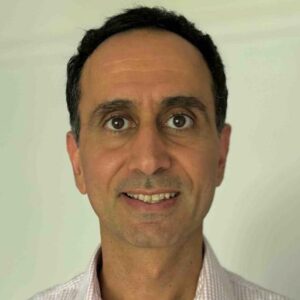
Optimizing Ultrasound with AI: Physically-Inspired, Semi-Supervised, and Self-Supervised Learning for Efficient Aberration Correction and Beamforming
Hassan Rivaz, PhD
Professor & Concordia University Research Chair, Electrical and Computer Engineering
Ultrasound is a safe, fast, cost-effective, and portable imaging modality. With the introduction of pocket-sized, battery-powered ultrasound devices, it has the potential to become the modern-day stethoscope, providing clinicians with an accessible tool for critical patient insights. However, interpreting ultrasound images, which are often noisy, requires the expertise of trained clinicians. This presentation explores how advances in AI can simplify ultrasound interpretation by addressing two key areas: enhancing ultrasound image quality and extracting objective, quantitative tissue properties, such as tissue elasticity.
A significant challenge in training AI models for ultrasound analysis is the absence of ground truth in real ultrasound data. While simulated ultrasound images can be used, they often oversimplify the complexity of real-world conditions, leading to the domain shift problem, where model performance degrades on real test data. Additionally, even if ground truth could be estimated in real ultrasound data, variations in imaging settings, such as center frequency, further complicate model generalization. Our datasets frequently contain thousands of real ultrasound images, but without corresponding ground truth labels. In this talk, I will introduce methodologies based on self-supervision and unsupervised learning to unlock the value of these large, unlabeled datasets and address the challenges of domain shift and data variability in ultrasound imaging.
November 18 - Distinguished Professor Roger W. Howell | Radiopharmaceutical Therapy – How to Treat What You Cannot See

Radiopharmaceutical Therapy – How to Treat What You Cannot See
Roger W. Howell, PhD
Chief, Division of Radiation Research
Rutgers University
Radiopharmaceutical cocktails have been developed over the years to treat cancer. Cocktails of agents are attractive because one radiopharmaceutical is unlikely to have a curative therapeutic effect due to nonuniform uptake by the targeted cells. Therefore, multiple radiopharmaceuticals targeting different receptors on a cell and different degrees of diffusion into micrometastases is warranted. However, past implementations of radiopharmaceutical cocktails in vivo have not met with convincing results due to the absence of quantitative optimization strategies. We have developed artificial intelligence (AI) tools, within our recently released MIRDcell V4 application, that can optimize cocktails of radiopharmaceuticals. The AI tool determines the molar activities for each radiopharmaceutical in the cocktail that minimize the total disintegrations of the therapeutic radionuclide(s) that are required to achieve a specified tumor cell kill. Tools are provided for populations of cells that represent circulating or disseminated tumor cells, and for micrometastases. The capabilities of these tools will be demonstrated using both model and experimental data to show that this approach could be used to analyze samples of cells from cultures, animals, or patients to formulate the best combination of radiopharmaceuticals for maximum therapeutic effect with the least total number of disintegrations.
November 11 - Sjoerd J. Finnema, PhD | The Role of Imaging in CNS Drug Discovery and Development
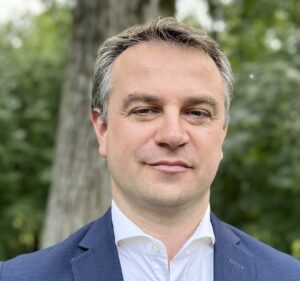
The Role of Imaging in CNS Drug Discovery and Development
Sjoerd J. Finnema, PhD
Research Fellow
AbbVie
The discovery and development of central nervous system (CNS) drugs demand substantial resources, extended timelines, and significant costs, all entailing high risks. Positron emission tomography (PET) and magnetic resonance (MR) imaging have become indispensable tools in CNS drug development, facilitating decision-making in early-phase studies by assessing tissue exposure, target engagement, and pharmacological activity. As CNS drug development shifts towards disease modification, neuroimaging has emerged as a critical translational tool, optimizing the stratification of clinical trial participants and enhancing decision-making throughout the entire drug development process. In this seminar, we will explore various examples of how PET imaging plays a pivotal role in the CNS drug-development process.
November 4 - Bryan Muir, PhD | Reducing Uncertainty, Increasing Confidence: Ionizing Radiation Metrology at NRC
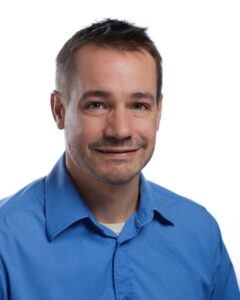
Reducing Uncertainty, Increasing Confidence: Ionizing Radiation Metrology at NRC
Bryan Muir, PhD
Research Officer (NRC), Adjunct Research Professor (Carleton University)
National Research Council Canada
The National Research Council is Canada’s largest research and technology organization, founded in 1916 to carry out applied research to address industrial and societal needs. A specific mandate of the NRC is to fulfil the role of Canada’s National Metrology Institute (NMI) and this is realized through NRC’s Metrology Research Centre. NRC Metrology is responsible for the realization of the international system of units (SI) and disseminates measurement standards through calibration and technical services to a wide range of end users.
The Ionizing Radiation Standards group within the Metrology RC is very active in addressing measurement issues in radiation protection, radiation therapy and industrial applications of ionizing radiation. Through i) the development of primary measurement standards for dosimetry, radioactivity and neutron fields, ii) the dissemination of these standards through calibrations, and iii) participation in research collaborations and best-practice guidance, it supports users across all applications of ionizing radiation to ensure that point-of-use measurements are accurate, traceable and equivalent.
This presentation will explore the history and mandate of the NRC, and describe the worldwide system of metrology that provides the basis for all measurements. I will describe activities in ionizing radiation metrology in Canada with a focus on research projects in linac dosimetry.
October 28 - Manojit Pramanik, PhD | Listening to light: Photoacoustic imaging and its applications

Listening to light: Photoacoustic imaging and its applications
Manojit Pramanik, PhD
Northrop Grumman Associate Professor
Iowa State University
Photoacoustic imaging is an emerging novel imaging technique combining both optical and ultrasound imaging. A short-pulsed laser illuminates the tissue to generate sound waves called the photoacoustic wave. These sound waves are used to get high contrast, high resolution deep tissue imaging of various parameters. Photoacoustic imaging, like ultrasound imaging, is a multi-scale multi-depth imaging modality.
In this presentation, the basics of photoacoustic imaging and several imaging systems will be covered. For example, photoacoustic computed tomography (PACT), photoacoustic microscopy (PAM). Few clinical/pre-clinical applications of photoacoustic imaging will be discussed, such as, non-invasive sentinel lymph node detection for breast cancer staging, intracranial hypotension detection in small animal, photoacoustic aided ultrasound-guided needle tracking etc. Recent development of deep learning applications in photoacoustic imaging and contrast agents will also be discussed.
October 21 - Abhishek Kumar, PhD | Optical Microscopy: Faster and Gentler Imaging
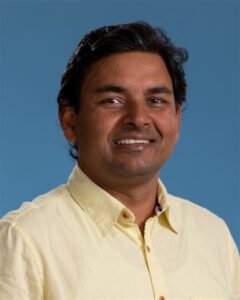
Optical Microscopy: Faster and Gentler Imaging
Abhishek Kumar, PhD
Assistant Professor
Cell and Regenerative Biology and Center for Quantitative Cell Imaging
UW-Madison
Optical imaging is widely used in biomedical sciences. Despite the wide range of optical imaging techniques available, there is no one universal modality suitable for all length scales and types of biological samples. Also, development of new optical imaging systems that can bridge existing gaps between cellular and organismal imaging is vital. Confocal and light sheet microscopes are two popular optical imaging modalities that are routinely used for imaging live and fixed samples at multiple spatial and temporal scales.
For the first portion of this talk, I will discuss our group’s efforts to advance these technologies for imaging large or rapidly growing samples at high spatial and temporal resolutions. Specifically, I will present our implementation of a confocal microscope for improving imaging speed by a few orders of magnitude for large samples. I will then show the use of this imaging technique, in collaboration with your colleagues, to answer important biological questions in systems ranging from living zebrafish embryos to whole cleared mammalian organs.
In the second half of my talk, I will discuss the computational tools we are developing and using to compliment imaging modalities. I will conclude by sharing our lab’s vision for the future and plan to integrate nanophotonics to augment imaging modalities.
October 14 - Jim Pipe, PhD | Combining Technology and Use Design for High Value MRI
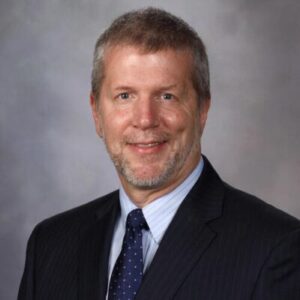 Combining Technology and Use Design for High Value MRI
Combining Technology and Use Design for High Value MRI
Jim Pipe, PhD
Professor of Radiology & Medical Physics
UW-Madison
Clinical MRI scanners were not designed de novo, but have their origin
in the NMR scanners used in laboratory science starting in the mid 20th century. The complexity of the equipment and the richness of the information that can be obtained makes MRI an incredibly useful diagnostic tool. However, some of this legacy includes unnecessary complications that pervade clinical MRI, which in turn can produce errors, image variability,
inefficiency, and poor access.
The Magnetic Resonance Technology and Use Design (MRTUD, pronounced “MR2D”) group at UW Madison produces next-generation MR technology with a strong emphasis on the interaction of the user. As we improve technical quality and efficiency, we embrace simplicity, operational clarity, conceptual models, and improved user experience. Examples of the technology we are designing, along with examples of the way in which strong design principles are applied, will be discussed. Our framework of “Value” will also be discussed, which is used as a guide for improving the impact our work on each individual patient as well as the global healthcare system in general.
October 7 - Jason Cai, PhD | Imaging synaptic vesicle protein 2A in the living brain
 Imaging synaptic vesicle protein 2A in the living brain
Imaging synaptic vesicle protein 2A in the living brain
Jason Cai, PhD
Associate Professor of Radiology & Biomedical Imaging
Yale School of Medicine
Extensive preclinical and postmortem data have shown that the brain region specific synapse loss is a robust biomarker of a variety of neurodegenerative diseases. Traditional techniques for quantifying synapses exclude their uses in the clinic, limiting their translation and direct clinical impact. PET imaging of synaptic vesicle protein 2A (SV2A) for the first time allowed us to quantify synapses in living systems noninvasively, opening up the possibility of using the spatial-temporal synapse density information in the early diagnosis of neurodegenerative diseases and the evaluation of treatment effects of novel therapeutics in the clinic.
In this presentation, we will talk about the development of SV2A PET ligands and their preclinical, translational, and clinical applications in neurodegenerative disorders.
September 30 - Aarushi Bhargava, PhD | Ultrasound and acoustic cavitation for therapy
 Ultrasound and acoustic cavitation for therapy
Ultrasound and acoustic cavitation for therapy
Aarushi Bhargava, PhD
Assistant Professor, Department of Biomedical Engineering
University of Wisconsin-Madison
Although ultrasound is conventionally recognized as a diagnostic modality, it is emerging as a therapeutic strategy for various medical conditions. Ultrasound can non-invasively and wirelessly deliver thermal or mechanical energy via waves and induce cavitation to manipulate tissues and injected synthetic materials inside the body. This manipulation can be used for drug delivery and cell stimulation at low ultrasound intensities. At higher intensities, it can ablate tissues. In this talk, I will briefly discuss my research on using different acoustic cavitation regimes of microbubbles at varying intensities of focused ultrasound to treat retracted blood clots and alter dense fibrous environments at microscale levels. We will also be looking at the ability of ultrasound to stimulate synthetic microsystems for performing spatiotemporally controlled drug delivery and high-frequency cell-specific neurostimulation.
September 23 - Marty Pagel, PhD | The Infinite Game of Research

The Infinite Game of Research
Marty Pagel, PhD
Professor of Medical Physics & Radiology
University of Wisconsin-Madison
This presentation will discuss a variety of molecular imaging methods and research applications. We have developed MR Fingerprinting, PET/MRI, Photoacoustic Imaging (PAI) to quantitatively measure extracellular pH, oxygenation, and vascular transport rates in solid tumors. More recently, we have developed optical agents that detect extracellular proteases for eventual use during image guided surgery. We apply these molecular imaging methods to preclinical tumor models, and we have also applied our imaging methods to evaluate wound healing models.
Furthermore, this presentation will discuss the Infinite Game of research. Although biomedical research has often become a Finite Game in the USA, this type of game is unsustainable. Instead, a return to an Infinite Game of research has long-term benefits for our society, which can be accomplished by focusing on the fundamentals of the Infinite Game.

September 16 - John R. Cameron Symposium, Cynthia H. McCollough, PhD | Milestones in CT: Past, Present, and Future

Milestones in CT: Past, Present, and Future
Cynthia H. McCollough, PhD
Brooks-Hollern Professor of Medical Physics and Biomedical Engineering
Mayo Clinic, Rochester, MN
Since the first patient CT scan in 1971, CT technology has continued to improve, both in evolutionary and revolutionary ways. This presentation will describe the technical and clinical innovations that have occurred, including the introduction and clinical adoption of spiral, multi-slice, cardiac, dual-source, dual-energy, and photon-counting-detector CT. Reconstruction of images from the projection data has also undergone major changes, moving from filtered back-projection to iterative reconstruction and deep learning approaches. The consequences of these advances in technology include the ability to diagnose and monitor an ever-expanding list of clinical indications. Several of these will be highlighted in this tour of CT imaging.
September 9 - Student Demonstration Competition
Educational outreach is essential for increasing the visibility of medical physics and enticing the next generation of brilliant and motivated professionals. To encourage engagement with outreach efforts, the Medical Physics Graduate Student Outreach committee has worked with the Department of Medical Physics to offer scholarships for the creation of activities demonstrating interesting concepts in medical physics to non-expert audiences. After a short presentation detailing the current state of outreach in the Medical Physics program, each of the scholarship awardees will present their demonstrations. This seminar will be a fun and interactive opportunity to consider how we communicate our field’s value to the public.